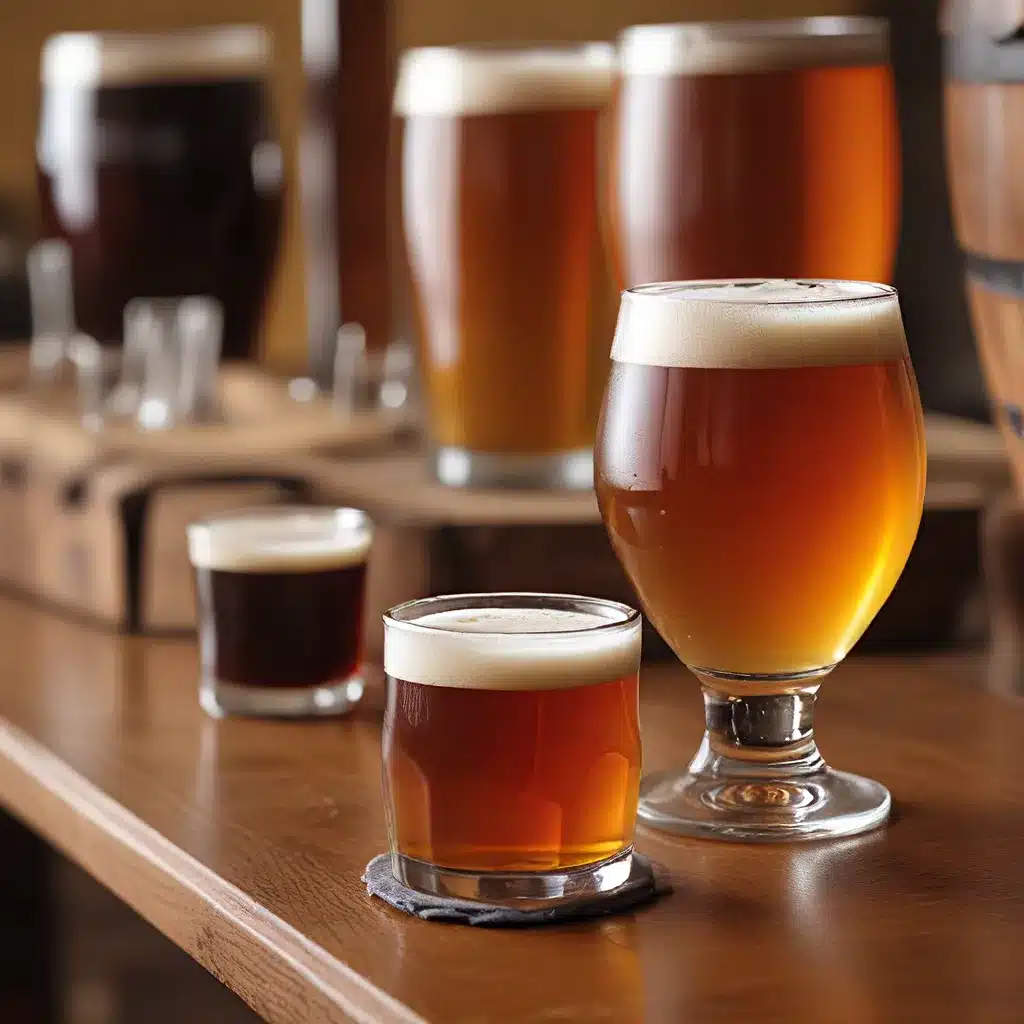
The Forgotten Roots of American Craft Beer
Picture this: it’s the mid-1800s, and waves of European immigrants are pouring into the newly settled California territory. These thirsty newcomers have a distinct preference – lager, the crisp and effervescent beer style that had taken the Old World by storm. But there’s one problem – the infrastructure needed to produce and distribute this cool-fermented delight just isn’t there yet in the Wild West.
So what’s a budding brewer to do? Well, if you’re one of the pioneering beer-makers of the era, you get a little creative. You cobble together whatever ingredients you can find – malted barley, wheat, even grits and cereals – and you brew at ale-like temperatures using lager yeast. The result? A unique hybrid style that’s part lager, part ale – and quintessentially American.
This, my friends, is the origin story of steam beer, a scrappy and resilient style that would go on to become a cornerstone of the craft beer revolution. And at the heart of this tale lies the legendary Anchor Brewing Company, a San Francisco institution that’s been keeping the steam beer flame alive for over a century.
The Rise and Resilience of Anchor Brewing
Anchor Brewing’s journey reads like a true American saga. Debuting in 1896, the fledgling company endured a series of setbacks in its early years – fires, the death of its owners, and of course, the dreaded Prohibition era. Yet through it all, Anchor persevered, clinging to its unique steam beer recipe and becoming a beacon of hope for the dwindling band of traditional brewers.
By the 1960s, Anchor was in dire straits, with antiquated equipment and just a single employee. The big national brewers like Anheuser-Busch and Miller were dominating the market with their uniform, watery pilsners. Anchor Steam, on the other hand, was a culinary oddity – only available on draft, and with a tendency to spoil if bottled or canned.
As Tom Acitelli writes, “Anchor Brewing and its signature beer would both surely be gone soon, dying embers in a once-blazing American beer landscape.” But then, in a twist of fate that would shape the future of craft beer, a young Stanford graduate named Fritz Maytag stepped in and bought a controlling stake in the brewery.
The Maytag Era and the Craft Beer Renaissance
Maytag, an heir to the home appliance fortune, was captivated by the idea of preserving Anchor’s unique history and character. He set about radically reforming the steam beer recipe, ditching the sugar and food coloring and instead focusing on pure malt, a specific yeast strain, and the earthy, herbal Northern Brewer hop.
The end result was a consistently delicious and unique beer, ready for wider distribution beyond the confines of San Francisco. And as the craft beer wave started to crest in the 1980s, Anchor Steam found itself riding the swell, becoming a curiosity and a revelation to a new generation of beer enthusiasts.
“We were what the whole craft brewing industry is today,” Maytag said in 2015. “A combination of modern food science, technology, and traditional brewing.”
Anchor Steam’s success wasn’t just a testament to Maytag’s vision and hard work – it also highlighted the enduring appeal of this uniquely American style. While the rest of the craft beer world was busying itself with ever-hoppier IPAs and funkier seasonals, Anchor Steam remained a refreshing, balanced, and eminently drinkable alternative.
At The Up & Under Pub, we’ve long been devotees of Anchor Steam, appreciating its ability to cut across tastes and occasions. Whether you’re enjoying a spicy dish, catching a ball game, or simply savoring a moment of quiet reflection, Anchor’s caramel-tinged, slightly sweet profile is there to delight your palate.
The Craft Beer Landscape Today
Of course, the craft beer world has evolved dramatically since Anchor’s heyday. Hoppy, high-alcohol IPAs have become the dominant style, while funky sours, barrel-aged stouts, and experimental seasonals have added dazzling complexity to the scene.
But amidst all the innovation and flavor exploration, there’s still a place for the humble steam beer. Anchor Steam is, after all, the sole commercial representation of this truly American style, a living link to the pioneering spirit of those early Western brewers.
And with Anchor Brewing now under the ownership of Japanese brewing giant Sapporo, the future of this iconic brand has been the subject of much speculation. Will the new owners tinker with the recipe, or will they recognize the value in preserving Anchor’s unique heritage?
| Craft Beer Trends | Anchor Steam’s Enduring Appeal |
|---|---|
|
– Hoppy, high-alcohol IPAs – Funky sours – Barrel-aged stouts – Experimental seasonals |
– Balanced, drinkable profile – Caramel-tinged, slightly sweet – Versatile across food and occasions – Living link to America’s brewing history |
Only time will tell, but for now, Anchor Steam remains a beacon of stability in an ever-changing craft beer landscape. And for beer lovers like myself, that’s a comforting thought indeed. After all, some things are simply too good – and too quintessentially American – to ever truly fade away.
So the next time you’re at The Up & Under Pub, I highly recommend you give Anchor Steam a try. It’s a taste of history, a nod to tradition, and a refreshing reminder that sometimes, the old ways are the best ways. Cheers!

